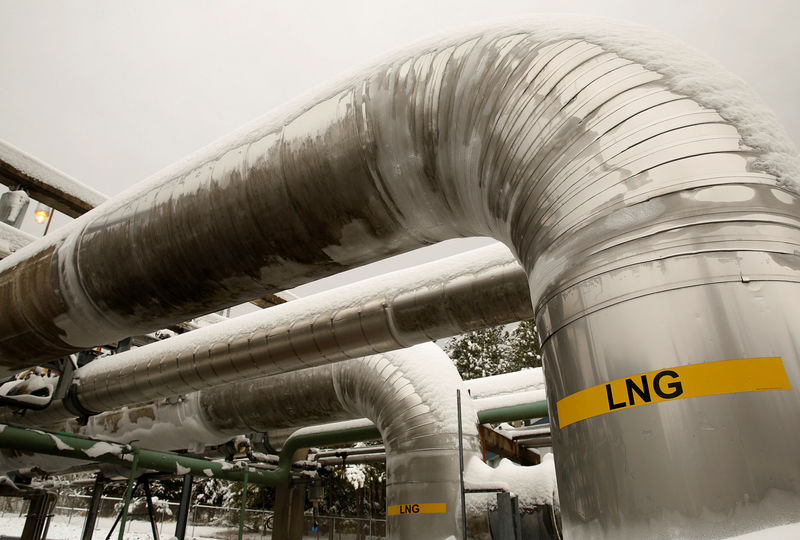 © Reuters. U.S. natgas pipeline flows reversed after Enbridge TETCO Ohio pipe blast
© Reuters. U.S. natgas pipeline flows reversed after Enbridge TETCO Ohio pipe blast(Reuters) – Enbridge Inc reversed the direction of flows on its Texas Eastern (TETCO) pipeline in Ohio after an explosion on one of its lines there on Monday, according to financial data provider Refinitiv.
Before the blast, which injured two people and damaged three homes, gas was flowing south through the damaged section of pipe from the Marcellus and Utica shale in Pennsylvania, Ohio and West Virginia toward the Gulf Coast, according to Refinitiv and gas traders.
After the explosion, however, small amounts of gas started moving north from the Gulf Coast on southern sections of the pipe. This would allow the pipeline to serve customers in states like Tennessee and Kentucky who stopped receiving gas after the explosion.
Enbridge said it isolated two other gas pipes near the damaged 30-inch (76.2 cm) line near Summerfield in Noble County in southeast Ohio so crews can safely investigate the integrity of those two lines prior to returning them to service.
The Calgary-based company did not estimate when it would return the pipeline to service.
Before the incident, drillers were producing over 30 billion cubic feet per day (bcfd) of gas in the Marcellus and Utica region. That dropped to around 29 bcfd on Monday-Thursday, according to Refinitiv.
One billion cubic feet is enough gas for about 5 million U.S. homes for a day.
In counties south of the damaged pipe, like Athens and Scioto in southern Ohio and Bath and Boyle in Kentucky, about 1.2 bcfd of gas was flowing south on TETCO toward the Gulf of Mexico on Sunday, according to Refinitiv.
But since the blast, almost 0.1 bcfd has been flowing north on the pipe through those counties on Tuesday-Thursday.
On the eastern side of the damaged pipe, flows in Greene County in southwest Pennsylvania also reversed direction.
About 0.6 bcfd of gas was moving toward the Gulf Coast on Sunday before the blast. Since then, however, about 0.5 bcfd has been heading east toward New Jersey. Greene County is one of Pennsylvania’s biggest gas producing counties.
Enbridge said the damaged section of pipe was built in 1952-53 and an inspection of the line was performed in 2012 with no remediation needed.
The 9,029-mile (14,531-km) TETCO pipeline was designed to carry gas from the U.S. Gulf Coast and Texas to high-demand markets in the mid-Atlantic and Northeast, according to the company’s website.
It became bi-directional over the past five years, enabling it to also carry gas from the Marcellus and Utica shale, where production is growing rapidly, to markets in the U.S. Midwest and Gulf Coast.
Fusion Media or anyone involved with Fusion Media will not accept any liability for loss or damage as a result of reliance on the information including data, quotes, charts and buy/sell signals contained within this website. Please be fully informed regarding the risks and costs associated with trading the financial markets, it is one of the riskiest investment forms possible.
Source: Investing.com





























